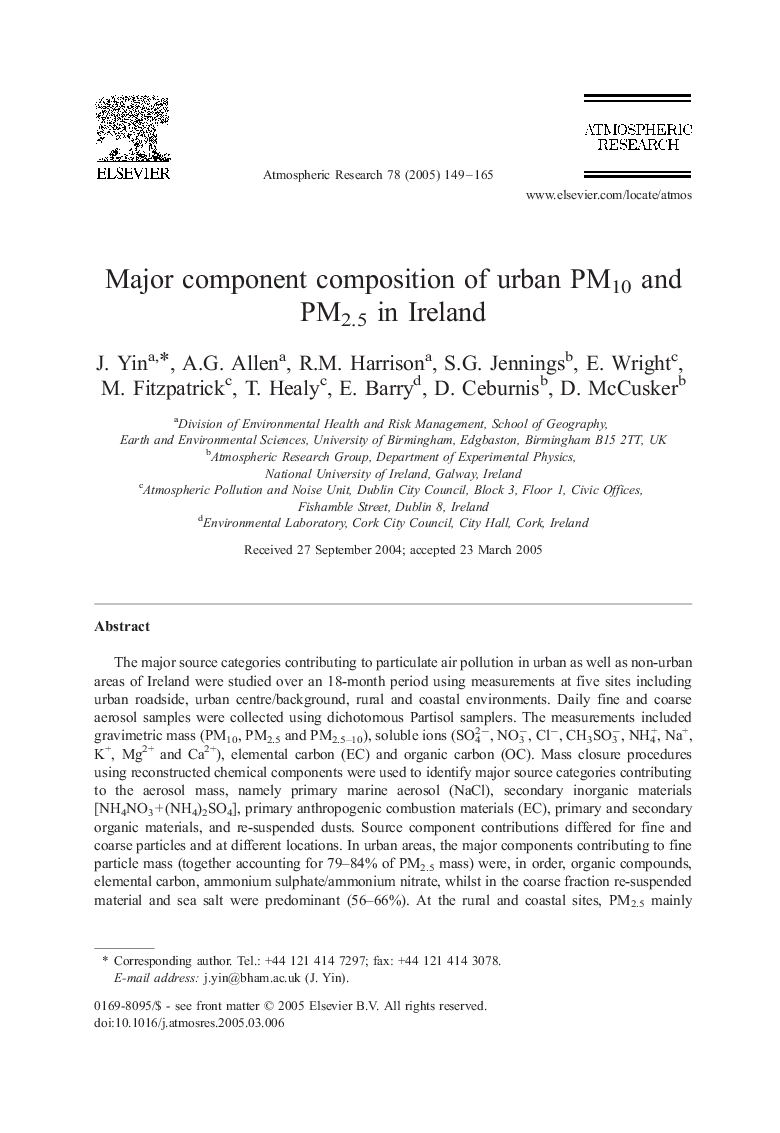| Article ID | Journal | Published Year | Pages | File Type |
|---|---|---|---|---|
| 9459699 | Atmospheric Research | 2005 | 17 Pages |
Abstract
The major source categories contributing to particulate air pollution in urban as well as non-urban areas of Ireland were studied over an 18-month period using measurements at five sites including urban roadside, urban centre/background, rural and coastal environments. Daily fine and coarse aerosol samples were collected using dichotomous Partisol samplers. The measurements included gravimetric mass (PM10, PM2.5 and PM2.5-10), soluble ions (SO42â, NO3â, Clâ, CH3SO3â, NH4+, Na+, K+, Mg2+ and Ca2+), elemental carbon (EC) and organic carbon (OC). Mass closure procedures using reconstructed chemical components were used to identify major source categories contributing to the aerosol mass, namely primary marine aerosol (NaCl), secondary inorganic materials [NH4NO3Â +Â (NH4)2SO4], primary anthropogenic combustion materials (EC), primary and secondary organic materials, and re-suspended dusts. Source component contributions differed for fine and coarse particles and at different locations. In urban areas, the major components contributing to fine particle mass (together accounting for 79-84% of PM2.5 mass) were, in order, organic compounds, elemental carbon, ammonium sulphate/ammonium nitrate, whilst in the coarse fraction re-suspended material and sea salt were predominant (56-66%). At the rural and coastal sites, PM2.5 mainly consisted of ammonium sulphate/ammonium nitrate and organic materials (65%), whilst sea salt was the largest contributor to coarse particles (39% rural, 56% coastal). Unexplained materials, accounting for about 7-28% of the mass, were attributed mainly to re-suspended materials at urban sites and organic materials at the other sites, as well as unmeasured water content.
Related Topics
Physical Sciences and Engineering
Earth and Planetary Sciences
Atmospheric Science
Authors
J. Yin, A.G. Allen, R.M. Harrison, S.G. Jennings, E. Wright, M. Fitzpatrick, T. Healy, E. Barry, D. Ceburnis, D. McCusker,
